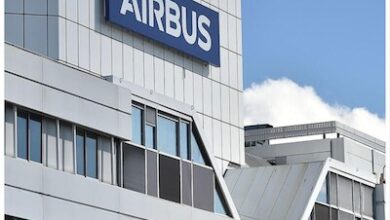Elon Musk reveals robotaxi: Will Tesla face the same challenges as China? | World News

Elon Musk unveiled Tesla’s robotaxi on Thursday (October 11), featuring two gull-wing doors and no steering wheel or pedals. He also introduced a robovan, highlighting Tesla’s shift from affordable, mass-market vehicles to robotics.
Click here to connect with us on WhatsApp
According to Musk, these vehicles operate using artificial intelligence and cameras without the extra hardware employed by competitors. However, investors and analysts have raised concerns about the feasibility of this approach from both technical and regulatory standpoints.
Musk’s robotaxi projects miles behind China
Despite these advancements, Tesla lags in the robotaxi space, particularly in China, a crucial market for the US automaker. Chinese startups and tech firms are already testing self-driving fleets in cities like Guangzhou, Wuhan, and Beijing, with support from local governments.
WeRide, a Guangzhou-based startup, launched in 2017 and has established commercial operations. Pony.ai, another autonomous vehicle startup backed by Toyota, holds permits for commercial robotaxi services in key Chinese cities, including Shanghai and Shenzhen.
Major tech companies are joining the race as well. Baidu’s Apollo Go service offers fully driverless rides in Wuhan, Beijing, Chongqing, and Shenzhen, with safety drivers operating in other areas. Baidu reported nearly 900,000 rides in the second quarter of 2024, marking a 26 per cent year-on-year increase.
These Chinese companies are also eyeing international expansion. WeRide secured a permit to operate in the UAE in early 2023 and recently partnered with Uber to integrate its robotaxis into Uber’s platform, with a rollout planned later this year. WeRide has also received permission to test a robobus in Singapore.
Baidu is reportedly in talks with overseas automakers and ride-sharing companies to expand its services internationally, with plans to enter markets like Hong Kong, Singapore, and the Middle East. Pony.ai, too, is considering expansion to Southeast Asia, Europe, and the Middle East. The company has signed a memorandum of understanding with ComfortDelGro in Singapore, potentially paving the way for large-scale commercial operations.
Chinese startups are also testing their technologies in the US. WeRide received a permit in August to test vehicles in California, allowing passenger transport, with or without a driver, for the next three years. However, these tests are limited to non-commercial use.
In China, Tesla is reportedly set to receive preliminary approval to launch its Full Self-Driving service following Musk’s unexpected visit to the country in April. State media has indicated that Tesla is exploring the testing of its autonomous driving software in Shanghai, with plans to launch by early 2025. Tesla’s China-made electric vehicle sales grew by 19.2 per cent in September compared to the same month the previous year, according to the China Passenger Car Association.
Profitability problem in robotaxis
While the robotaxi sector is expanding, profitability remains a concern. According to estimates from Haitong International Securities, Baidu’s Apollo Go service loses nearly $11,000 per vehicle annually in Wuhan, although a less expensive model could potentially turn a profit of $16,000 per vehicle each year. In comparison, traditional ride-hailing vehicles generate approximately $15,000 annually, which is split between the driver and platform.
The rise of robotaxis has also challenged China’s ride-hailing workforce, which has grown from 4.4 million drivers two years ago to 7 million today. With the potential for job losses due to automation, social media discussions have questioned whether driverless cars are taking away jobs.
This shift is affecting China’s driving schools as well. For instance, Eastern Pioneer Driving School has reduced its number of instructors by more than half since 2019, replacing them with remote-monitoring systems that allow instructors to evaluate students’ driving tasks, such as parallel parking, through real-time digital feedback.
Will the US face similar challenges in the future? Only time will tell.
First Published: Oct 11 2024 | 12:48 PM IST




